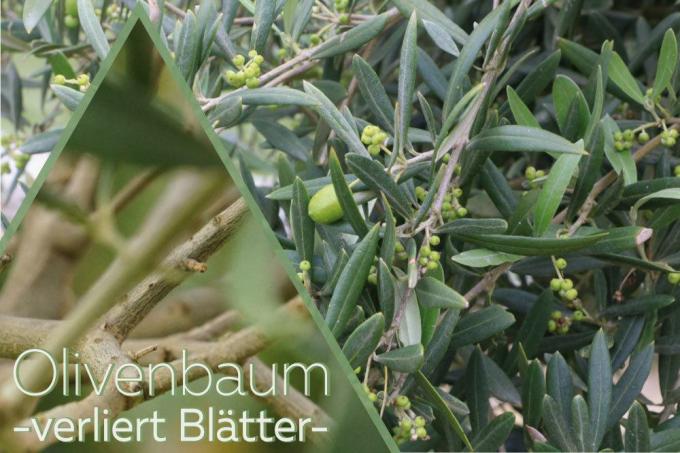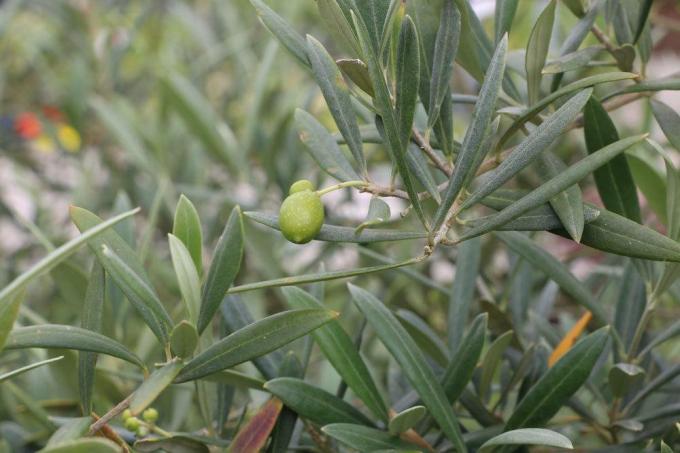
table of contents
- causes
- Waterlogging
- Persistent drought
- Lack of light
- Wrong location
- Wrong wintering
If the Olive tree There are several possible causes for losing leaves. In any case, quick help is needed to stop leaf loss, fix the trigger and prevent worse damage to the tree. Interested parties can find out what is important and how the problem can be easily resolved here. But also how yellow and dried-up ones can be prevented in advance with the right care.
causes
Possible causes of leaf loss
If the olive tree loses leaves, the following causes can appear to be responsible.
- Waterlogging or casting defects
- persistent drought
- Lack of light
- wrong location
- wrong wintering
In order to be able to fix the problem in a targeted manner, research into the causes must first be carried out. First and foremost, the substrate and site conditions must be checked. Of course, it is also important to monitor previous care.

Waterlogging
Olive trees are designed to thrive in a rather dry climate. The roots reach very far and deep into the ground in order to be able to absorb even the last of the moisture. The leaves give off very little water through evaporation. Too frequent or too strong watering or even waterlogging are therefore very poorly tolerated by the plants. Typical consequences are yellow leaves and root rot. Commonly, the problem occurs in the following cases.
- too dark or too cool location where evaporation is reduced
- too much watering in winter
- poor or no drainage of the water from the substrate
A few points should therefore be observed to prevent waterlogging or soil that is too damp.
1. Put a drainage layer in the tub or the planting hole by placing a thick layer of potsherds or coarse gravel under the substrate.
2. Choose a suitable, permeable substrate.
3. Place the olive tree in a warm and dry location that is protected from heavy rainfall.
If the soil is already wet and yellow leaves or excessive leaf loss appear, rescue measures must be taken immediately.

The following steps are crucial for this:
1. Remove the old substrate from the olive tree and carefully rinse off any remaining earth.
2. Carefully cut off rotten, diseased or dead roots with sharp scissors.
3. Leave the plant for a few hours to dry the roots without substrate.
4. Plant the tree again, paying attention to the preventive points.
5. Water appropriately and limit it to a few waterings, especially in winter and in darker, cooler locations. The substrate should dry well between watering.
Persistent drought
Although the olive tree is adapted to a dry climate, it loses dried leaves when there is a lack of water and persistent drought. Since the problem here lies solely in insufficient air humidity and insufficient watering quantity, it can be remedied very easily and quickly.
at dry In locations such as the living room with heated air, occasional spraying with water and regular ventilation can help. It is important to reduce the evaporation of moisture from the leaves. at too dry Substrate needs to be poured more often. Alternatively, the olive tree can also be repotted in a larger planter, since more soil also means a larger water reservoir.
Lack of light
A dark location is not always a problem for the olive tree. But it loses leaves if it is too dark and too warm at the same time. The reason for this can be found in the stimulated growth and the lack of photosynthesis. At warm locations the growth is activated. However, if there is no light, sufficient photosynthesis cannot be carried out. So the plant lacks the energy to grow. To make up for this deficit, it sheds leaves.
This can be remedied by making the olive tree either lighter or cooler.

Wrong location
Too dry or too moist, too light or too dark, too warm or too cold - if the location conditions are not right for the olive, it will be weakened. A common consequence is excessive leaf loss. This is often preceded by dried out tips and yellow discoloration. Therefore, if olive trees lose foliage, the care and site conditions should be checked in any case.
Wrong wintering
A common mistake when wintering the olive tree is too high a temperature. Many hobby gardeners put the plants outside in the summer and bring them into their homes when the cold weather sets in. Here they are still warm, but unfortunately often too dark and too dry. On the one hand, this means that they lack the resting phase. On the other hand, there is a rapid weakening.
So that the Olive tree does not lose any leaves, or at least as little as possible, during the winter, it should be at temperatures of 10 to 15 degrees and sufficiently bright. The hallway, a winter garden or professional wintering in a nursery are ideal. It is also important to stop fertilizing and to reduce the amount of water used. It is watered about every two weeks when the substrate has dried sufficiently. Persistent wetness must be prevented as well as completely dried out earth. How large the amount of water should be depends, among other things, on the humidity. In dry rooms, the amount of water should be slightly larger or it should be poured more frequently. In damp winter quarters there is correspondingly less watering.
The substrate is a good orientation. If this quickly becomes dry or huge, the weekly to bi-weekly watering amount can be increased.
